Procuring Innovative Climate Change Services: PROTECT project Final Event
In the last years, the European Union has introduced numerous policies aimed at mitigating the impacts of climate change, generating a need for innovative solutions and services to help achieve climate objectives.
Examples of climate mitigation include:
- Modernizing technology across industries to enhance energy efficiency;
- Utilizing renewable energy sources such as solar, wind, and geothermal power;
- Adopting changes in management practices and consumer behavior.
In this framework, Earth Observation represents a crucial area where European policies are stimulating innovation and demand for new services.
On June 11th, Eurisy took part in the Final Event of the PROTECT Project, a Horizon EU funded project started in June 2022, which aimed to utilise Innovation Procurement and in particular Pre-Commercial Procurement (PCP) to unlock the potential of the Earth Observation-based climate services’ market.
The discussions of this full day event were framed within three focus points: the role of Innovation Procurement for the development of new effective solutions, the relevance of Earth Observation for climate resilience and the importance to raise awareness, and finally, the sustainability of the project results.
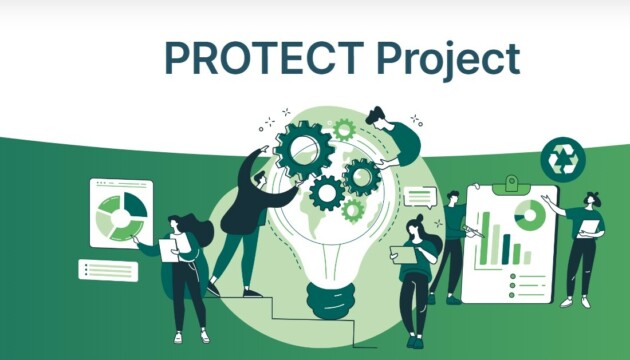
About the PROTECT Project
Focusing on 5 application domains: Energy & Utilities, Sustainable Urban Communities, Agriculture, Forestry and other Land Uses, Marine and Coastal Environments and Civil Security and Protection, in the past 2 years, the project engaged with an extensive and varied community of procurers, to facilitate the definition and aggregation of needs and requirements for Earth Observation-based climate services. This PCP-preparatory mission fueled all the activities and research related to the project, fostering, and supporting the need to develop what they came to define a “buying with impact” approach.
But what is this new approach which could support innovation in the sector?
If public procurement is the process on how public authorities, such as government departments or local authorities, purchase goods, works, or services by companies previously selected via a regulated, competitive, and transparent procedure, the innovation procurement happens on another level.
During an innovation procurement procedure, the public sector purchases the development or deployment of pioneering innovative solutions not yet present in the market from private companies, to address specific mid-to-long term public sector needs. This represents an approach which deeply encourages innovation by the private sector and thus supports breakthrough developments in collaboration with the end users trough a co-creation process.
How can this approach be beneficial for the development of Earth-Observation solutions for climate resilience?
This exact question represents the mission of the PROTECT project, which aims to enable public authorities to use state-of-the-art public procurement approaches in order to identify solutions, specifically climate services based on Earth Observation, that best fit the specific and systemic needs of the public demand. It further represents the mission and ambition of its follow-up PCP project, recently awarded to the PCP-WISE consortium and expected to start at the end of 2024.
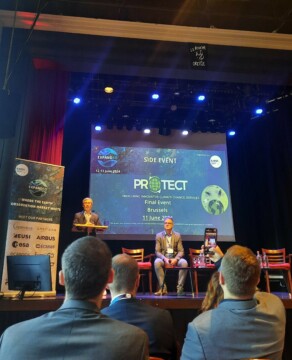
The importance of this new approach of Innovation Procurement was highlighted during the event on June 11th 2024, describing the benefits and some concrete examples of how this specific type of procurement, the PCP, is already an incredibly dynamic mechanism in other sectors.
Within a PCP the public buyer buys the research and development services of products, services or processes, which do not exist on the market yet. This process starts from the public buyer describing its needs, prompting businesses and researchers to develop innovative products, services or processes to meet this exact need.
It was discussed, for example, how the healthcare systems often faces complex and unique challenges that are not adequately addressed by existing market products, and how PCP allows for the procurement of tailored solutions that meet specific needs, such as new medical devices, digital health tools, or advanced diagnostics.
This approach, very popular in the United States and Asia, fosters R&D, and stimulates local and national industries, especially SMEs, which can more easily access to fundings, and reduce market entry risks enhancing their growth and competitiveness. It was discussed how this approach could be crucial to foster innovation for climate solutions related to Earth Observation, and how this type of procurement could tackle unmet challenges related to climate legislation, regulations and policies at the EU, regional and local levels, but also drive new market opportunities and propel the Earth Observation industry, and the entire EU space sector, towards exponential growth.
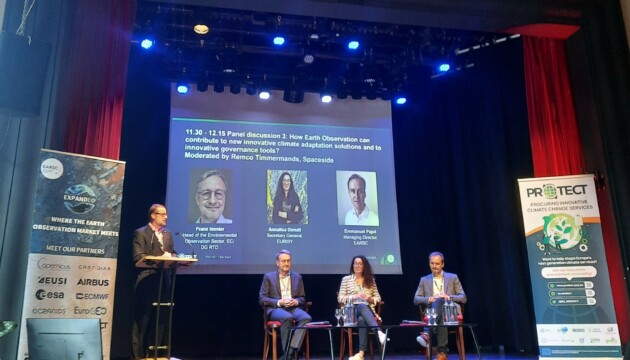
A second part of the event was devoted to the exploration of the actual benefits of Earth Observation for climate resilience, during which experts showcased examples and underlined how much the adoption of those systems is still underestimated.
Eurisy was fully active in this discussion, with Annalisa Donati, Eurisy Secretary General, participating as a speaker in the panel: “How Earth Observation can contribute to new and innovative climate adaptation solutions and to innovative governance tools?” which gathered key stakeholders and networks in the field of Earth Observation. Moderated by Remco Timmermans, with Franz Immler, Head of the Environmental Observation Sector of the DG Research Innovation of the European Commission, and Emmanuel Pajot, EARSC Secretary General, the panel discussed the potential and benefits of Earth Observation in bringing innovative solutions for climate resilience, by exploring successful cases and stories, and presenting current climate solutions which can help mitigate the effects of the climate change. The panel outlined the need to develop a new narrative and raise awareness to go beyond the space bubble and scale up new solutions which could become available for a wider public of users.
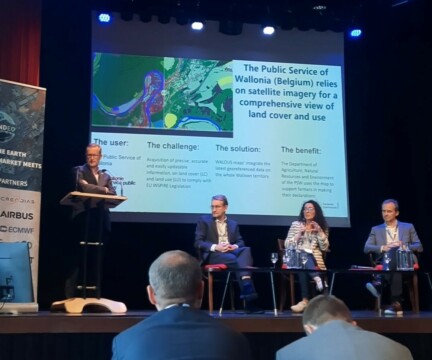
The afternoon sessions allowed for a great networking arena with other project’s partners, Earth Observation providers and other stakeholders, and a great discussion was held on the key exploitable results of the project and its continuation in the future.
The consortium presented key deliverables of the project, like the PROTECT toolkit, an instrument aimed at empowering stakeholders with knowledge on climate adaptation and mitigation, EO and innovation procurement policies, strategies, and action plans’ implementation, as well as on the development of new and innovative EO-based climate services.
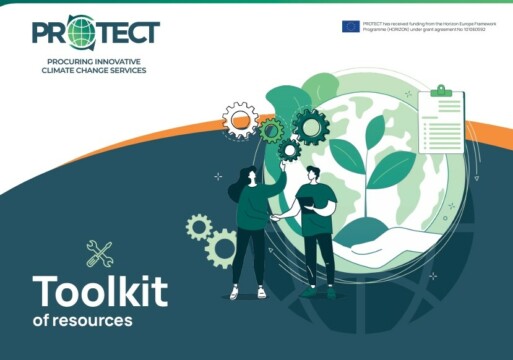
The follow up PCP WISE project was further presented to the audience. It has the goal to gather authorities and buyers in bringing their respective needs and requirements to Earth Observation providers, for the development of new solutions to be presented as a challenge to the EO and climate service markets. PCP WISE stands for Pre-Commercial Procurement for the customisation and operationalisation of Water management Innovation from Space for European Climate Resilience, and brings the challenge of designing a system capable of updating the local water balance for soil -water vegetation system and monitoring it with Earth Observation based solutions. This combination ultimately produces information that can be shared across regional borders and uniformly. The daily operational and structural production of information is especially crucial for insights into (i) climate trends and current weather conditions, (ii) cirtical boundries of water balance sytems, and (iii) developing and stimulating resilient climate adaption models.
Hopefully in the next months we will learn more about how this approach will be developed, and how local authorities and Earth Observation solutions can benefit from it.
But what are the expected outcomes is leveraging PCP for the development of Earth Observation based solution for climate resilience?
The consortium explored three main outcomes:
- “Customisation and Pre-Operationalisation of Prototypes”, allowing the development of end-user services for Climate Change adaptation and mitigation, building on Copernicus services to meet common needs and achieve performance targets beyond the current state of the art for the buyers group.
- “Reduction of Demand Fragmentation for Innovative Solutions”, enabling public procurers to collectively implement a PCP for climate adaptation and mitigation.
- “Creation of new opportunities” that will help the market grow and benefit suppliers by using joint specifications and widely sharing results.
As a result of the market gap analysis carried out during the first year of the PROTECT project, which was based on different stakeholders’ consultations activities, tools, surveys and several workshops, four topic challenges related to climate change have been identified as possible challenges for the future PCP for Earth Observation services related to climate resilience: Floods, Fire, Water Resilience, and Sustainable Infrastructure.
The vision and ambition for the future is to develop and establish a unified solution that could address all four challenges simultaneously. This is the idea which is planning to be conceptualised through the PCP WISE call, which aims to create a significant impact not only on the four identified challenges but also on the broader domains by bringing 22 use cases
So, the event was not the final stage after all; it was a stepping stone toward a better and more effective use of Earth Observation based solutions for climate adaptation policies.
